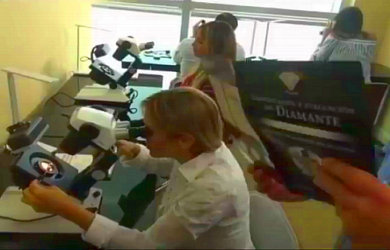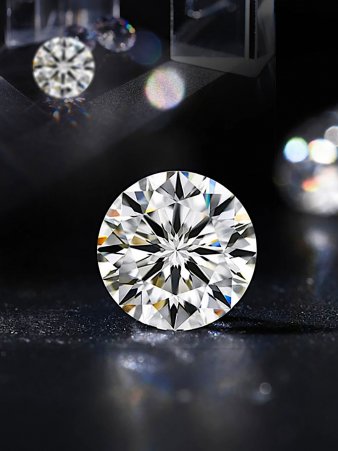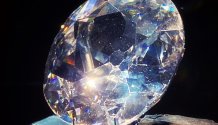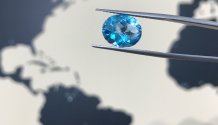PHYSICAL PROPERTIES:
1.- HARDNESS:
Hardness is 10 in Mohs scale; it varies depending on the face, the direction, and the origin of the crystal. By hardness, of a mineral, we understand its resistance to be scratched by another. Diamonds possess greater hardness than any other known mineral. Hardness should not be confused by fragility or brittleness; diamonds are fragile and may break when they receive a sharp blow... Diamond
2.- EXFOLIATION:
It portrays four exfoliation directions, parallel to the original faces of the octahedron
3.- SPECIFIC WEIGHT:
It is very high (3.52), in spite of being made up by relatively light atoms, the specific weight of industrial diamonds is lower.
OPTICAL PROPERTIES ARE:
a) BRILLIANCE:
Involves the reflection of light, both on the surface and inside a gem or material. Among transparent gems, the diamond is the one with the greatest brilliance, such property grants important value to diamonds.
b) TRANSPARENCY:
It is the ease, with which light is transmitted through a transparent gem, good quality diamonds are transparent.
c) REFRACTION:
It is very high single refraction (2,417).
d) DISPERSION:
Elevated (0,044) it possesses a great ability to reflect the light and separate it in the different colors of the red, orange, blue, green, purple. Normally diamonds are colorless with some yellowish tint, which may get to be an intense yellow or brown. Saturated colors are most appreciated. Light colors have less value, except for light tones of: blue, violet, and pink, which are very rare, therefore they have very high prices.
Brown gems are very common. We may find some with reddish brown tones, light brown and coffee brown being the latter the most expensive. Diamonds with a very beautiful intense or saturated yellow color are known by the name of Canary Diamond, the term Champagne Diamond is appointed to those that have an intense or saturated yellowish-greenish.
Orange-colored gems are abundant. Black diamonds are opaque and are not considered gems, but more of a curiosity. When speaking about the color of colorless diamonds, it is necessary to mention the fluorescence of some of them. This property consists of the emission of light displayed when an ultraviolet beam of light falls over a gem. Some diamonds, when they are exposed to solar light become fluorescent and emit light, most of them emit a blue fluorescence, and it could be a light or intense blue, if there is to intense could affect the appearance and brilliance of the diamond, especially in the top grades of the colorless.
Colored diamonds are given the name of fancy color diamonds, and their prices are not higher than those of colorless stones of similar qualities unless they are extremely rare colors: red, blue green, and even pink colors Nowadays, we find in the market many diamonds whose color has been treated through atomic radiations. The color of a cut diamond is graded with natural light or with an instrument called Diamond Lite, with it, one can determine the exact color.

Diamonds Physical and Optical Properties
A diamond is considered flawless when observed under a 10 x magnifying lenses loupe, with chromatic and spherical correction does not display any external blemish or internal inclusions. External blemish may be generated through the cutting or after it. Defects in cutting, which sometimes leaves at the girdle of the stone a fissure or some diamonds show due to irregularities in the crystallization, external growth lines, or some marks of their growing, called “Naturals”, consist of a portion of the rough gem skin of the diamond, left after in the cut diamond, with the purpose to retain weight.
INCLUSIONS:
This name is given to every fault, growth marks, presence of other minerals, fissures, etc. confined in the inside of the gem or which emerge to its surface. They are usually crystals of: pyrope garnet, olivine, zircon, tiny diamond crystals, which sometimes emerge to the surface, called knots; in seldom cases graphite.
For further information, questions or concerns on the subject please contact us by clicking on our contact page




